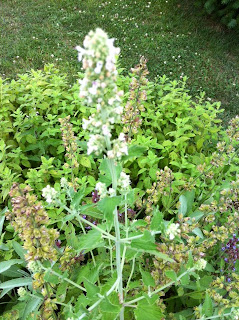When you hear the term “superfood”, you may think of exotic foods like noni fruit, acai berries, or mangosteen. There has been a lot of marketing hype around exotic superfoods, and there have been some pretty impressive claims. While these foods likely have health benefits, there are less exotic foods that are just as “super”, more readily available, and much less expensive than those foods that have traveled across oceans to reach your stomach. Here are a few of my favorite everyday superfoods:
Green Tea: OK, so tea is not a food, it’s a beverage…a “super beverage”. Green tea contains EGCG (epigallocatechin gallate), which is thought to be one of the most powerful cancer-fighting antioxidants found in nature. Green tea is also rich in heart-protective polyphenols. Evidence is growing showing green tea can help boost metabolism, prevent sun damage, and balance cholesterol. Green tea makes an excellent replacement for those soft drinks in your life. Don’t like the taste of green tea? Try sweetening with a little honey, combine it with other flavorful teas, or mix in a little fruit juice and serve cold.
Blueberries: Blueberries offer many, many health benefits in one small, tasty package. Other vaccinium species like bilberries, cranberries, whortleberries, and huckleberries have similar benefits. Flavonoids known as anthocyanosides are what give the berries their deep blue-red color. It is this compound that helps protect the vascular system by strengthening capillary walls. This action may result in lowering of blood pressure, reduction of blood clots, and reducing varicosities and bruising. Regular intake may improve night vision and visual acuity. Anthocyanosides are powerful antioxidants.
Garlic and onions: Garlic and onions have been prized for centuries as medicinal foods and for their culinary use. Regular use can help reduce risk of hypertension, heart attack, stroke, gastric and intestinal cancers, and lower LDL cholesterol. Compounds called allyl sulfides and bioflavonoids are thought to be responsible for these benefits. Eating raw garlic and onions during cold and flu season can help ward off those maladies. The minimum effective dose is about 2 tsp. of chopped or crushed garlic, or 2 Tbs. of onions per day depending on body weight. It’s OK to smell bad and feel good :)
Wild Salmon: Besides being an excellent source of high quality protein, wild salmon and other wild fatty fish are an excellent source of omega-3 fatty acids, which are necessary for optimal health and difficult to obtain from plant foods (many people are unable to make the complex conversions from plant foods). These fats play numerous roles in health including:
• Protect heart health and reduce risk of sudden death from heart disease
• Reduce risk of stroke
• Reduce chance of heart disease in Type 2 Diabetes
• Essential in infant brain and eye development during pregnancy and infancy
• Improve blood lipids
• Improve blood vessel function
• Improve symptoms of immune and inflammatory disorders such as rheumatoid arthritis, Crohn’s disease and some skin conditions
• Reduce the risk of some mental disorders such as Alzheimer’s disease and depression
• Protective of cell membranes
Kale: Kale is a member of the brassica family, which includes other super vegetables like cabbage, broccoli, cauliflower, and Brussels sprouts. Brassicas contain sulforaphane and indole-3-carbinol, which appear to be protective against some cancers. Kale is rich in flavonoids, which act as antioxidants, and carotenoids, which protect the eyes and mucus membranes. Vitamin K is abundant in kale, which is important to bone health and for proper blood clotting. Kale contains many minerals like copper, calcium, sodium, potassium, iron, manganese, and phosphorus, which are important to overall health.
This is not a full list of my favorite superfoods. I would also have to include walnuts, mushrooms like shittake and maitake, tomatoes, many wild foods like nettles and dandelion, and of course the many spices we use to season our food. If you want to eat for health, think a variety of tasty, nutrient dense foods as they come from nature.
A favorite super supper:
Steam a bunch of kale until tender. Toss with olive oil, chopped garlic, and sea salt. Toss in some chopped bacon, Greek olives, or hot pepper flakes if desired.
Brush wild salmon steaks with olive oil and sprinkle with salt. Broil or grill for several minutes on each side until done. While salmon is cooking, melt some butter in a frying pan and stir in some turmeric (a super spice). Add the onions, and cook until soft. When the salmon is done, place the onions and melted turmeric butter on top.
Serve the salmon and kale with a side of wild rice, quinoa, or other cooked grain seasoned with your choice of spices if desired. Serve iced green tea with a slice of lemon or lime as a beverage.
For dessert, serve a bowl of blueberries with or without a dollop of freshly whipped cream. Add other berries like blackberries, strawberries, raspberries, and/or cherries and chopped walnuts if desired.


